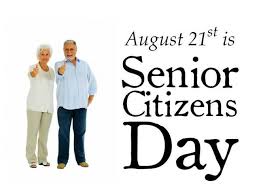National Grief Awareness Day – August 30, 2022, history, quotes
This National Grief Awareness Day on August 30 is dedicated to raising awareness of the myriad ways in which individuals cope with loss. It offers resources to those going through personal losses and reminds us to support people we know who are grieving. National Grief Awareness Day, founded by Angie Cartwright in 2014, hopes to encourage open communication on loss and bereavement and better inform the public on the facts of grief.
I believe that imagination is stronger than knowledge. That myth is more potent than history. That dreams are more powerful than facts. That hope always triumphs over experience. That laughter is the only cure for grief. And I believe that love is stronger than death.” – Robert Fulghum
worldtimeshindi.com
HURRY UP -HOT SHOPING DEALS TODAY BUY
Myntra offers
TATA QLIQ offers
Wow skin science offers
Ajio offers
Addidas offers
sumsung offers
Apple iPhone offers
boat gadgets offers
beardo growth offers
HISTORY OF NATIONAL GRIEF AWARENESS DAY

Grief is one of the oldest and most enduring aspects of the human experience. If you haven’t yet experienced grief, it’s unfortunately likely to happen. The term ‘grief’ encompasses all of the emotions around a loss, and ‘mourning’ is defined as the external expression of the pain. ‘Bereavement’ is another commonly-used term for grief. Throughout human history, there have been many attempts to describe and heal grief, and they have changed significantly over the years.
Together, we form a necessary paradox; not a senseless contradiction.
Criss Jami
worldtimeshindi.com
Due in part to our vastly improved physical and mental healthcare, grief is understood far differently today than even as little as 100 years ago. While we often have the privilege (for some, even the expectation) of only losing our loved ones when they are at a ripe old age, comfortable, and with family nearby, this has rarely been the case throughout history. The lack of modern transportation often separated loved ones, wars ravaged populations, and poor medical and sanitation knowledge led to too many untimely deaths. Throughout history, the deaths of loved ones have been far more common, and grief was understood differently.
Burials, often in family groupings, occur throughout the world. In many cultures, family and friends attend funerals or certain types of wakes to honor the deceased. Though mourning traditions vary from culture to culture, these aspects of the ritual often persist.
In part due to the frequency of death and grief, the topic was poorly researched or treated until the 1900s. In 1917, famous psychologist Sigmund Freud wrote: “grieving is a natural process that should not be tampered with.” This encapsulates the sentiment well: grieving is a part of life and needs no special attention. As the century wore on, however, there came to be more interest in grief and its stages.
Elisabeth Kübler-Ross famously wrote her consequential book, “On Death and Dying,” in 1969. The book laid out the ‘Five Stages of Grief’ that many are familiar with today, under the name ‘The Kübler-Ross Method.’ This was easily accepted, and grief was managed along a distinct timeline for years. Simon Shimshon Rubin put forth the Two Track Model of Bereavement to further explain the phenomenon in 1981. However, it was only from 1996 to 2006 that great headway was made in the understanding of grief as something that resisted strict and chronological definition. In the 2000s, a more fluid understanding of grief, especially as a multifaceted and complex issue, has come to be understood and treated.
Showing a lack of self-control is in the same vein granting authority to others: ‘Perhaps I need someone else to control me.
Criss Jami
worldtimeshindi.com
LoopOther Celebrations on August 30
August 30 is also celebrated as
International Whale Shark Day
National Holistic Pet Day
National Frankenstein Day
When you are out of control,
someone is ready to take over.
Toba Beta,
worldtimeshindi.com
NATIONAL GRIEF AWARENESS DAY TIMELINE
1917
A Natural Process
Psychologist Sigmund Freud famously pens “grieving is a natural process that should not be tampered with.”
1969
“On Death and Dying”
The 1969 book, “On Death and Dying,” by Elisabeth Kübler-Ross, first lays out the Kübler-Ross theory, more commonly known today as the ‘Five Stages of Grief.’
1981
Two Track Model of Grief
Established by Simon Shimshon Rubin, the Two Track Model of Bereavement provides deeper insight into the grieving process, which was previously oversimplified and inaccurate.
1996
Grief, Questioned
Beginning around 1996 and lasting until 2006, psychologists seriously question the simplicity of grief.
2007
Complicated Grief Established
Complicated grief, a type of grief that gets worse over time and is commonly caused by a complicated relationship with the deceased person, is first cautiously defended as existing in a study.
2022
P.G.D. is Added to the Handbook
In March, the American Psychiatric Association adds P.G.D. to its official “Diagnostic Handbook.”
HOW TO OBSERVE NATIONAL GRIEF AWARENESS DAY
Support a grieving friend
If a friend has been honest with you and shared a current story of grief or loss, today is the day to be an extra shoulder for them to cry on. While acknowledging that everyone processes their feelings differently, offer to support your friend in whatever way they need.
Engage in self-care
In the throes of grief, a normal human response to loss, self-judgment, and anger are not productive emotions. Rather than attempting to push yourself onto an acceptable “grieving timeline,” remember that there is no one path for those in mourning, and engage in self-care by letting yourself feel whatever you’re feeling.
Post #NationalGriefAwarenessDay
Help National Grief Awareness Day accomplish its mission of educating the public on grief by sharing what you’ve learned on social media. Creating space for any kind of reaction to loss is healthy for you, and might just be what someone in your social circle needed to see.
5 IMPORTANT FACTS ABOUT GRIEF
Myth: Grief = Mourning
Though not widely known, it’s true that mourning and grief cannot be used interchangeably — grief is the internal pain associated with loss, while mourning is the external expression of that pain and it often facilitates grief.
Grief often comes with secondary losses
While the trauma of losing a loved one is hard enough, those in mourning frequently must cope with a secondary associated loss, like loss of financial security or loss of housing.
Myth: Grief happens in clearly defined stages
While professionals have identified significant stages of grief that often occur, it is possible and even common for those working through grief to skip steps entirely, have more than one reaction at once, or move backward through steps.
Grief requires effort
‘Grief-work’ is the term often used to refer to a grief response — the physical and emotional toll of grief deeply affects the lives of those going through it, so it’s important to engage in self-care throughout.
Myth: Grief can be completely resolved
Sadly, many people who have experienced loss report that grief, in some form or another, continues for the rest of their lives. Like many other mental ailments, it can recur in varying levels of intensity for years.-
WHY NATIONAL GRIEF AWARENESS DAY IS IMPORTANT
It raises awareness
Many people — both who have and haven’t experienced significant losses — don’t have a firm grasp on what grief is and how to cope with it. Spreading awareness on grief to the general public helps to better support those who are grieving and gives those who are not tools for when they encounter grief someday.
It saves lives
For some, grief can turn into dangerous and lonely depression. It’s essential to support yourself and others while going through a loss, as a reminder that there is always light at the end of the tunnel.
It offers resources
It can be hard to find the resources and organizations you need while grieving. National Grief Awareness Day can greatly help by connecting mourners to the psychological, emotional, and even financial resources they need to cope with their losses.
HOW TO CELEBRATE NATIONAL GRIEF AWARENESS DAY
The best way to celebrate the day is by helping the people who are in grief. If there are too many problems, sometimes looking into a counselor, therapist or another expert will be a great idea to come out of the problem. But remember, no matter what the circumstances are, be there for them and offer your help if they need it. You can use the hashtag #GriefAwarenessDay to post on social media
NATIONAL GRIEF AWARENESS DAY FAQS
Where is National Grief Awareness Day celebrated?
The United States.
Are there other holidays on August 30?
Yes! August 30 is also National Toasted Marshmallow Day and National Beach Day.
Are there other national holidays about mental health?
Yes! October 10 is World Mental Health Day, September 10 is World Suicide Prevention Day, and October 8 is National Depression Screening Day.
Sandeep Raiza — Content Writer, Website Designer, SEO Strategist, and WordPress Expert AI specialist delivering impactful digital solutions that drive business growth.Combining creative storytelling with technical expertise.





